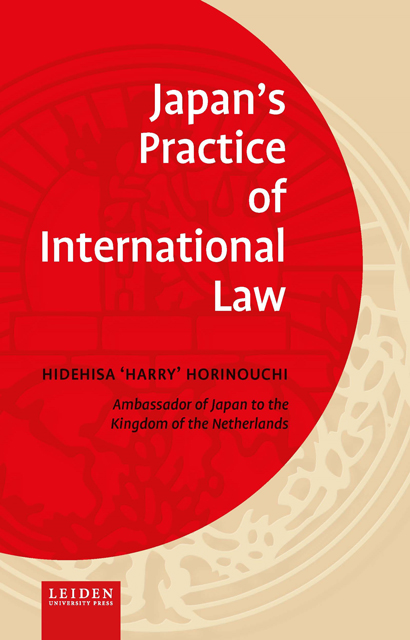Book contents
- Frontmatter
- Dedication
- Contents
- Foreword
- Chapter I Security and the Right of Self-Defense: 8 Hours on September 11
- Chapter II The End of the War: How World War II ended in Asia
- Chapter III The Remnants of War: Chemical Weapon: Poisonous Gas Accident in Qiqihar City, Heilongjiang Province
- Chapter IV Waters: Spy Vessel Incident in the Southwest Waters of Kyushu
- Chapter V Consular Affairs: Japan-China Consular Agreement:* Trajectory from the Shenyang Consulate-General Incident
- Chapter VI Human Rights of a Hijacker: CAAC Flight Hijacking Incident
- Epilogue
Chapter VI - Human Rights of a Hijacker: CAAC Flight Hijacking Incident
Published online by Cambridge University Press: 12 January 2023
- Frontmatter
- Dedication
- Contents
- Foreword
- Chapter I Security and the Right of Self-Defense: 8 Hours on September 11
- Chapter II The End of the War: How World War II ended in Asia
- Chapter III The Remnants of War: Chemical Weapon: Poisonous Gas Accident in Qiqihar City, Heilongjiang Province
- Chapter IV Waters: Spy Vessel Incident in the Southwest Waters of Kyushu
- Chapter V Consular Affairs: Japan-China Consular Agreement:* Trajectory from the Shenyang Consulate-General Incident
- Chapter VI Human Rights of a Hijacker: CAAC Flight Hijacking Incident
- Epilogue
Summary
Introduction
On the afternoon of December 16, 1989, a hijacking incident occurred. A CAAC (Civil Aviation Administration of China) jumbo jet from Beijing was hijacked on the way to Shanghai and made an emergency landing at Fukuoka Airport. The injured criminal, Zhang Zhenhai, stated that he had participated in a demonstration in the Tiananmen Square Incident in June of the same year and he had decided to escape from the country after being arrested, claiming that it was a hijacking for political purposes. How should the Japanese government deal with the unprecedented situation of a hijacked foreign aircraft flying into Japan? What were the norms set by international law regarding the terrorist act of hijacking? How should we understand the relationship with domestic law that sets out the principle of non-extradition of political prisoners? As the case posed numerous challenges to the government, the people involved started to put all their efforts into reaching the best resolution. Mr. KOMATSU Ichiro, the director of the Legal Affairs Division of the Treaty Bureau of the Ministry of Foreign Affairs at that time, played a central role in the legal handling of the case.
First appearance of the paper: “Hijacking Incident of a Civil Aviation Administration of China Flight”, in: Shunji Yanai, Shinya Murase (eds), Putting International Law into Practice: In Memory of Ambassador Ichiro Komatsu, Shinzansha, June 2015.
1. Occurrence of an incident
The second Tiananmen Square Incident that occurred in 1989 is still a mystery. Following the sudden death of the former General Secretary Hu Yaobang (April 15, 1989), who lost his position in 1987, a large number of young people, mainly students, held a memorial rally and gathered at Tiananmen Square. On the night of April 21, more than 100,000 students and citizens demonstrated at Tiananmen Square for democratization. The occupation of Tiananmen Square by students and citizens did not end even after the arrival of Gorbachev, General Secretary of the Communist Party of the Soviet Union in Beijing (May 15), who visited China to announce the end of the China-Russia conflict. The welcome ceremony at Tiananmen Square was canceled and several events were forced to change venues.
- Type
- Chapter
- Information
- Japan’s Practice of International Law , pp. 119 - 132Publisher: Amsterdam University PressPrint publication year: 2022

